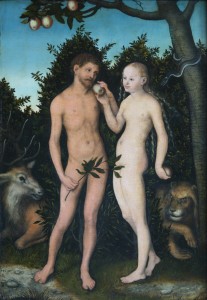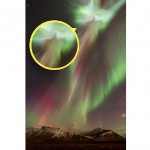
One of the interesting things about conducing a parish mission is how many people stay behind to ask really probing questions. Last evening here in Indianapolis a man named Frank asked me if it was wrong not to believe certain things the church teaches. He’s a scientist and he said he simply can’t accept the story of Adam and Eve. He asked if it was true that the church expects us to believe in a historical Adam and Eve.
So I explained the difference between a doubt and a difficulty. A difficulty is when you are confronted with something seemingly incredible or impossible and you say, “How can that be?” You retain curiosity and open and enquiring mind. That’s OK. A doubt is when you are confronted with the incredible or impossible and you say, “That can’t be.” At that point you’ve closed your mind and cut off enquiry and possible solutions to the problem. Difficulties with the faith are not only permissible, they are to be encouraged because it is through facing the difficulties that we think through our faith and discover solutions. The mindset of “How can that be?” is full of wonder and trust and most of all–open mindedness. Doubt is negative, self righteous and closes down.
So what are we to do with the story of Adam and Eve? I asked Frank what he didn’t believe about Adam and Eve. It turned out that he was a former Baptist and what he didn’t believe was the picture book Bible story fundamentalist version of the second chapter of Genesis. He didn’t believe in a handsome naked man standing behind a waist high bush and a beautiful naked woman with long hair discreetly covering her bosom as she talked with a snake about an apple. He didn’t believe there were only two people in the world who lived in a garden somewhere around Iraq about six thousand years ago.
Good, because you don’t have to believe all that about Adam and Eve to be a good Catholic. All you have to believe is that there was, somewhere at some point in time a man and a woman who were our first parents and that they made a monumental choice to disobey God. I reminded him that the stories in Genesis are ancient Hebrew creation myths. They are symbolic stories that incarnate the truth. They are not necessarily factual reports of exactly what happened. However, it is not true that the stories are intended to be merely myth–that is a fairy tale that didn’t happen at all.
So when and where did they live? The answer is, we don’t know. The stories in the first twelve chapters of Genesis are lost in the mists of what we call “pre-history”. It is only with Father Abraham that we can begin to piece together historical places and people. What can we say about Adam and Eve? First of all, we can conclude that they were not the only people or humanoids on earth at the time because their son Cain went out and found a wife.
My own theory is that there were other human-type creatures on earth, but that Adam and Eve were the first specially created humans with souls, with free will and perhaps the first with language. They were the first to have a relationship with God, and therefore the first parents of all who believe. Did they live in a garden? Were they naked? Did they talk to a snake? Did they eat an apple? Was there a tree of the knowledge of good and evil? I’m not saying there wasn’t, but it is possible to believe that most of these elements of the story are symbolic, but that the essential story is that a specially created man and woman lived on the earth in a state of child-like innocence and bliss–that they had a unique relationship with God which they spoiled by disobedience. The rest of the details can remain open ended. You may believe it all literally, but you needn’t.
Why does it matter? It matters because our faith is historical. From the beginning of the book of Genesis, through the genealogies of the Jews we are reminded that the characters from pre-history are linked with the characters we know are historical. The Jewish writers are intent to show that God’s interaction with humanity is historical and real and not mythological in the fairy tale sense. Consequently, we affirm that Adam and Eve were historical figures–how and when they lived and the details of their fall from grace are open to speculation based on the Biblical account.











